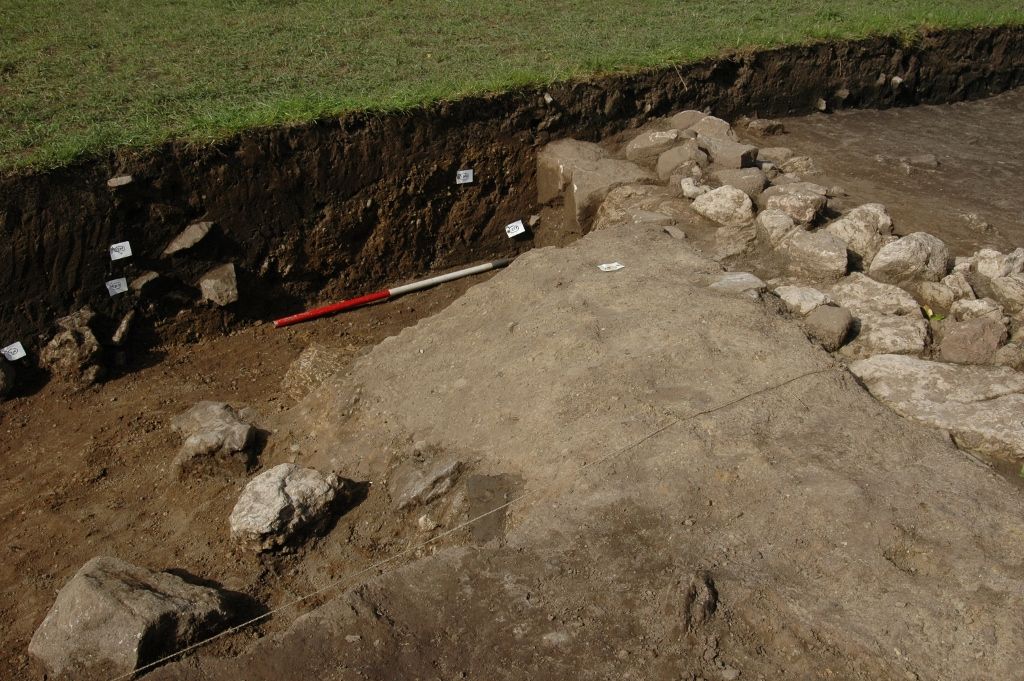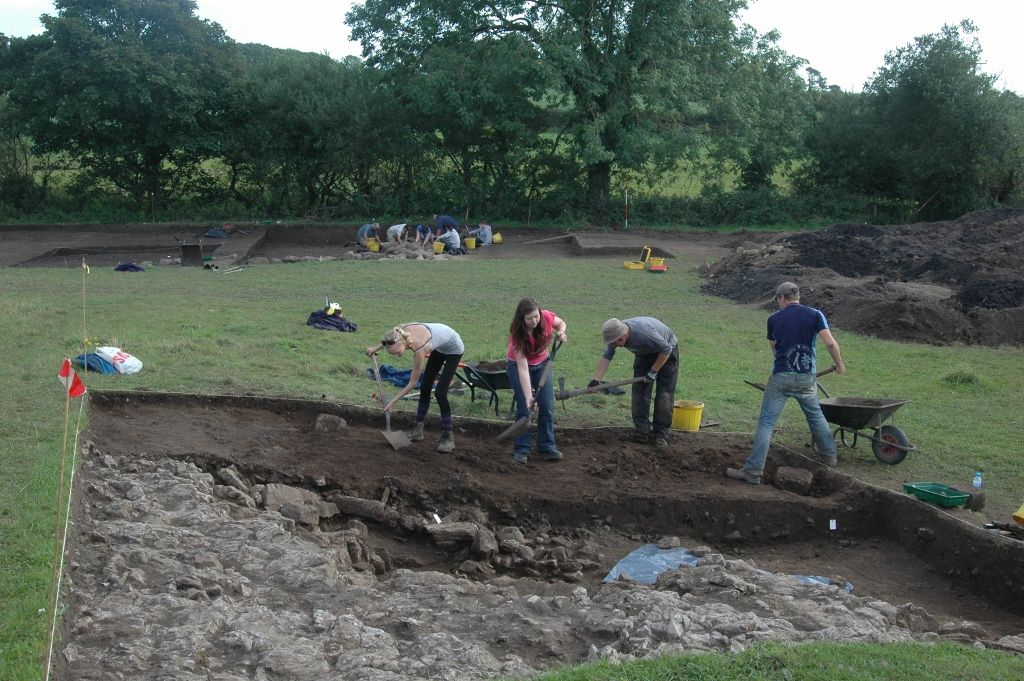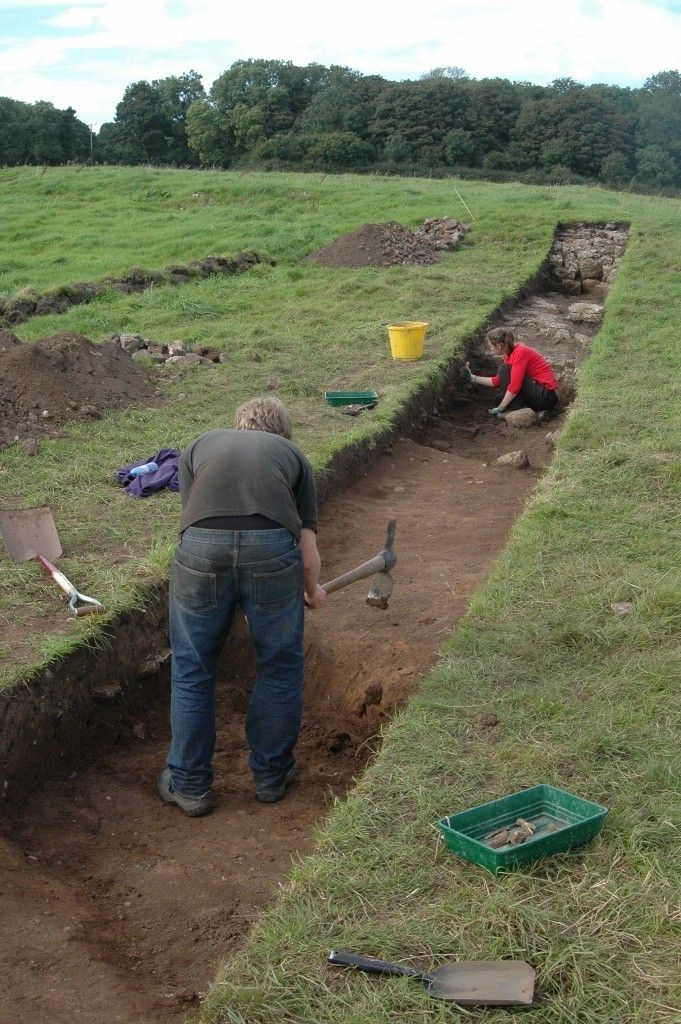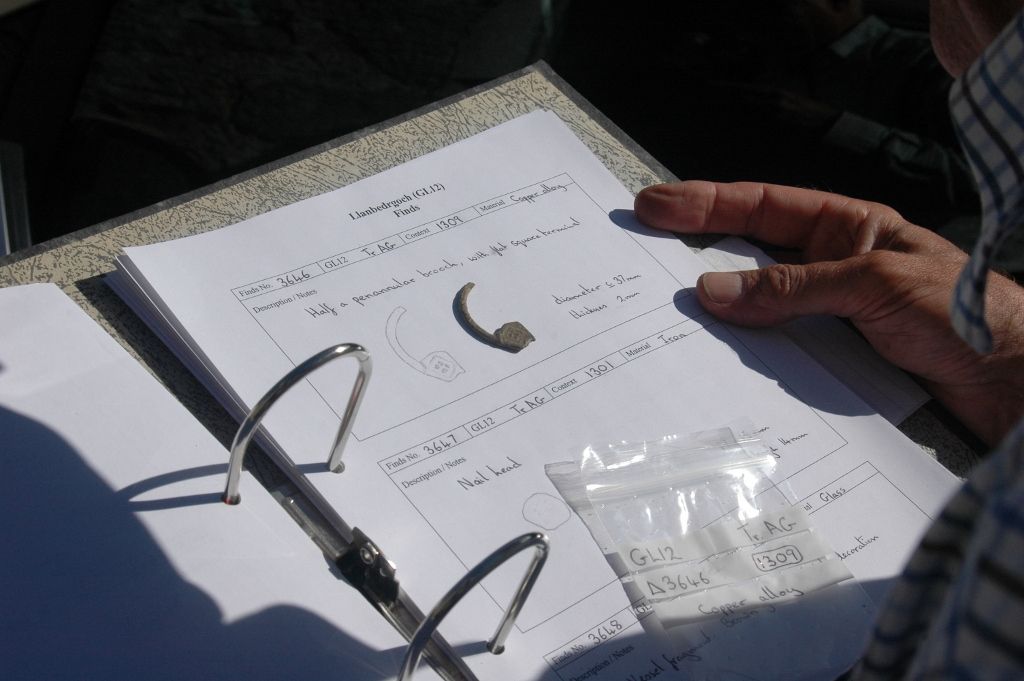Return of the Vikings? 5th September
, 5 September 2012
The teams in our three trenches have made excellent progress. In the main trench (AG), the full width of the stone enclosure wall has been revealed, and today we were able to identify a buried ground surface beneath (pre-dating) the wall, as well as upcast from the cutting of the early medieval ditch. In the north-east of the trench, a gully has been identified which formed one side of a small enclosure within the walls. This appears to have been a drip gully and drainage ditch around a timber building.
We have decided to extend our small square trench (AH) in the light of the human remains found a few days ago. This trench was sited to establish whether further burials existed in this part of the site, and the discovery promises to add significantly to our understanding of this episode of the site’s history. The crouched burial identified so far has only been partially uncovered (top of skull and femur), but it is clear that these articulated bones represent an addition to the small group of five bodies buried outside the defensive wall of the site during the second half of the tenth century.
In our narrow slit trench (AI) on the north-east side of the early medieval enclosure, the team has defined the edges on the inner and outer edges of the two defensive ditches, and a possible prehistoric feature at one end.
One of the more significant finds made so far is the hoop and decorated terminal of a copper-alloy penannular brooch. This is reminiscent of one found in the ninth- century Trewhiddle hoard. The midden deposits within trench AG continue to produce copious quantities of animal bone (important for our understanding of husbandry and diet), as well as ironwork.
Mark Redknap



